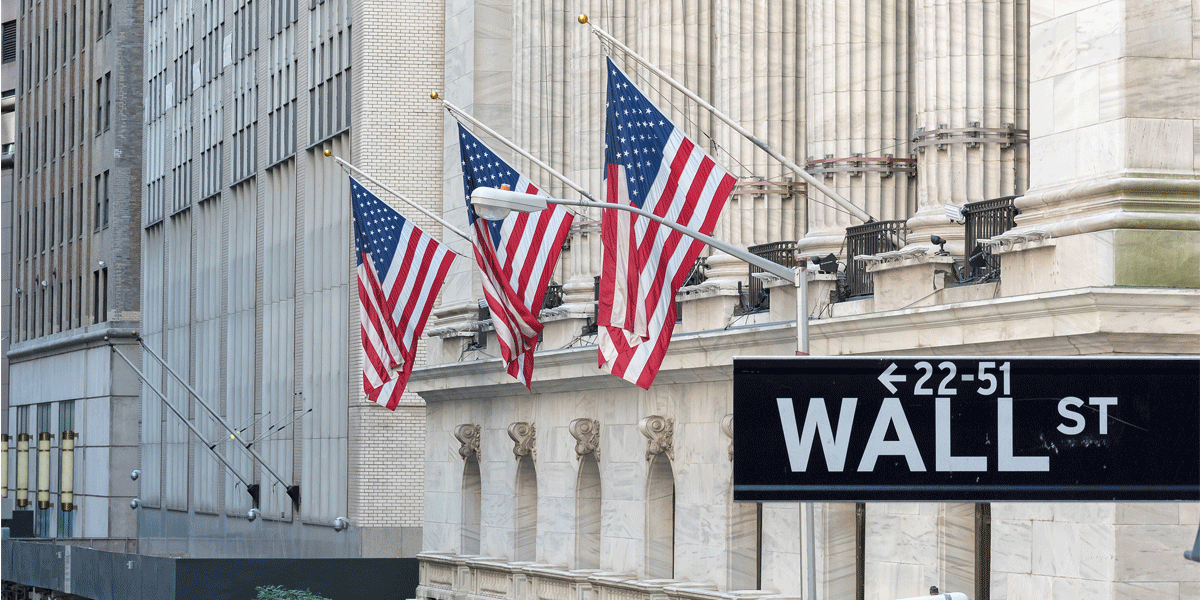Download the PDF

Bond markets remain sanguine about inflation, while consumers worry.
It took just one month since President Trump’s inauguration for equity markets to reverse a bullish response to his election as President. Of course, the reason for the change in equity market sentiment is the Administration’s aggressive and chaotic approach to its tariff policy. As predicted by many economists, including the Team at QIC, high tariffs would be seen by markets as a negative for economic growth and would therefore weigh on risk assets (such as equities) that have a strong correlation to the economic cycle.
However, the other mechanism that was meant to impact market sentiment was the threat to inflation posed by tariffs. High tariffs would increase inflationary expectations, forcing central banks to pause their easing cycles and potentially raise interest rates. Hence, the other part of the investment narrative was that, unlike typical risk-off episodes, bond yields rather than falling would begin to rise. Higher interest rates would not only double down on negative equity sentiment, but also undermine bond-market sentiment leaving investors with few options other than cash and cash-like assets such as gold. While the equity market response to the tariff chaos has played out as expected, the bond market response has not.
Since the start of the equity market sell off in mid-February, 10-year US Treasury bond yields are down by a sizeable 30 basis points. And despite the inflation risk that tariffs pose, inflation expectations have fallen, with market pricing for long-run inflation expectations (as measured by the US 10-year break even inflation rate) down by around 10bps since the equity market sell off. Even shorter-term inflation expectations have been falling with the 3-year break even rate also falling by 10bps. Why is this?
If a key mechanism of tariffs driving the US economy into recession was meant to be the rise in costs (and hence inflation), why has the market responded by factoring in lower inflation rates? Is it that markets are yet to catch on to the idea that tariffs are inflationary? The closely followed University of Michigan consumer sentiment index reports that households have been upgrading their inflation expectations over recent months. Households’ one-year inflation expectations have been climbing since November of last year from around the Fed’s target of 2.5% to a March level of 4.9%, while their longer-term expectations of inflation (i.e., the average rate over the period from 5 years out to 10 years out) is up from around 3% in the last months of 2024 to almost 4% in March. To put these numbers into context, if the market began to increase longer term inflation expectations in line with households (i.e., around a 1ppt increase), then 10-year US Treasury bond yields would be hovering at over 5% rather than around 4.2% currently. It goes without saying that such a rise in interest rates would be devastating for the equity market in the current environment.
But could there be something that the market is seeing that households are not? The possibilities are many, but in comments during his press conference, Fed Chair Powell hinted at a situation that could validate current bond market pricing. During the press conference, Chair Powell stated that the inflationary effect of tariffs could be “transitory” - an unfortunate turn of phrase given the negative connotations attached to the term used by central banks to assure markets that the effect of Covid on inflation would be temporary. Predictably, central bankers’ rationale for the transitory nature of tariffs is the same as that for Covid. That is, that tariffs will result in a one-off jump in the price level, but not an ongoing rise in prices. In other words, in the short term (3-6 months perhaps). inflation will jump as tariffs flow through the system, but then the price level will stabilise (at a higher level) and inflation will return to its pre-tariff rate.
Hence, raising interest rates would be a mistake as it would exacerbate the negative impact on the economy that tariffs were having through driving up the level of costs and would lead the central bank to have to unwind rate hikes as the economy slumped and inflation fell. If, in fact, central banks do as Chair Powell has suggested and look through (i.e., ignore) the initial jump in prices, and if tariffs do prove to be a one-off lift to the level of prices only, then we can make sense of bond market pricing. That is, weaker growth, in the absence of a rise in inflation expectations, justifies lower bond yields.
So, what are the risks? Obviously, the biggest risk is that tariff-induced inflation turns out not to be transitory. There are many reasons this could occur. But, just as with Covid, the size of the initial shock will be important – the larger the shock, the more chance it sparks a cost/price spiral a la Covid, which ultimately begins to unanchor the market’s inflation expectations. Currently, we estimate that tariffs signed into law by President Trump have lifted the effective US tariff rate from around 2% to 6%, an increase of 4ppts. A back-of-the-envelope calculation would suggest this would increase prices by around 0.4ppt.
Imports are about 20% of US consumption. Hence, an increase of 4ppts in the effective tariff rate would lift consumer prices by around 0.8ppts (4%*0.2) if all of the tariffs were passed on in higher prices. However, not all of the tariff increase will be passed on. Some will be absorbed by lower margins by foreign exporters and domestic importers and some of the price pressure will be absorbed by consumers switching to domestically produced goods and away from the higher cost imports. Econometric estimates place the pass through at about 50%. That is, the lift in prices is 0.4% (0.8%*0.5). This is probably a small enough shock for the Fed to look through.
However, we expect the eventual level of the effective tariff rate, given the Trump administration’s tariff program, is likely to be closer to 10-15% rather than 6%. In that case, the initial impact on prices would be around ¾ to 1¼%. This is still probably a shock that the Fed could look through. Beyond that, however, the tariff shock starts to lift prices by a dangerous amount. If we include all of the Trump Administration’s threats, the effective tariff rate could rise to as high as 25%. This would lift prices by over 2ppts and would require a Fed response. Thankfully, at this juncture, we are likely closer to the 10-15% eventual effective tariff rate than the 25% mark.

